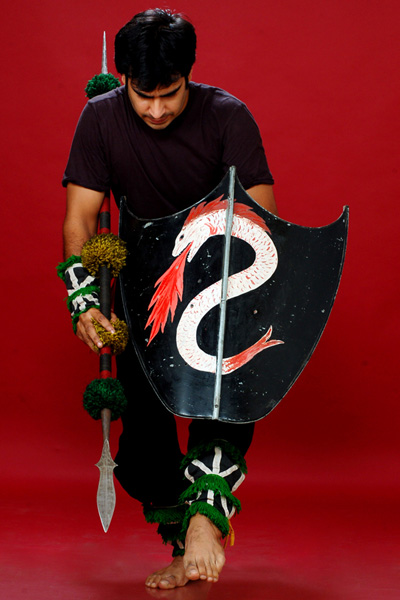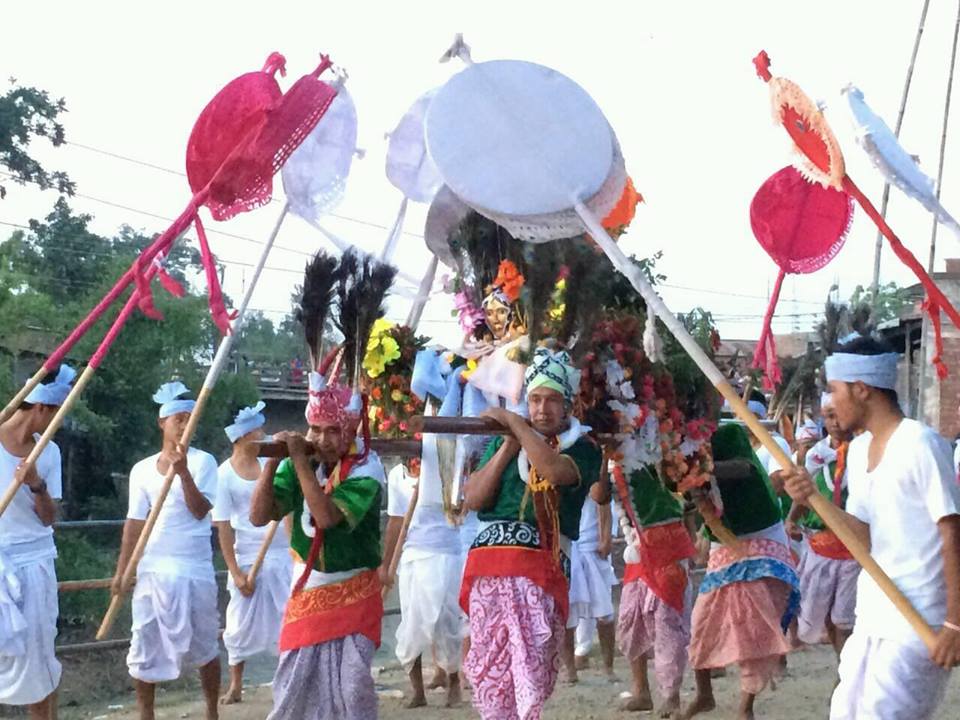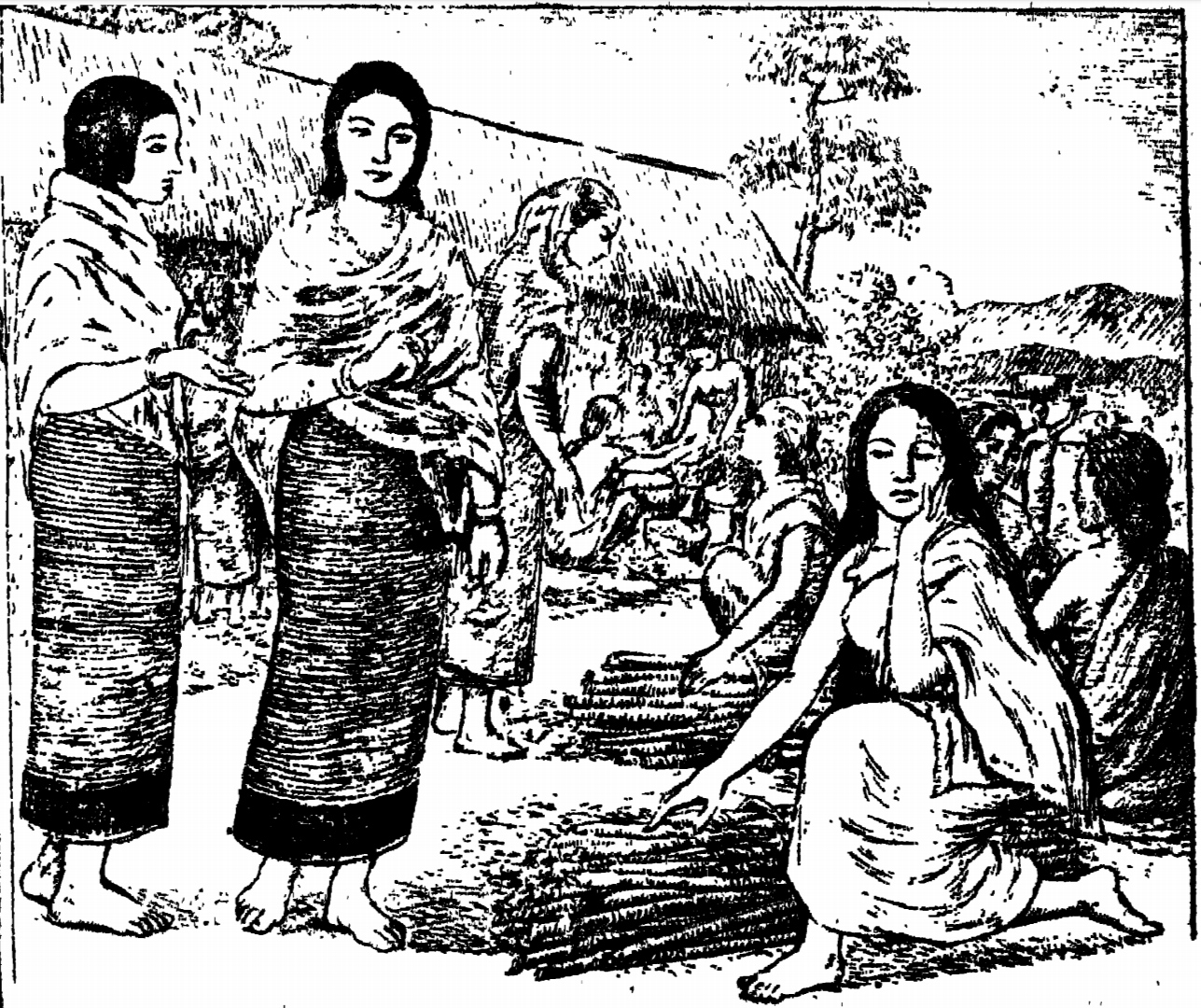|
Art Forms Of Manipur
The following is a list of Manipur notable art forms Martial arts * Huyen langlon aka Thang Ta * Arambai hunba (Arrow throwing art) Dance forms Classical dance form * Manipuri dance Folk dance forms * Lai Haraoba *Khamba Thoibi * * * Folk music * * Lai Haraoba Eshei * Pena Eshei * Manipuri Sankirtan Musical instruments There are various traditional musical instruments of Manipur. One such instrument is- * Pena * See also *Art and Culture of Manipur *Tourism in Manipur *Tourist Attractions in Manipur The following is a list of notable attractions in Manipur. Uniqueness * Hapta Kangjeibung - World's oldest pologround. * Samban-Lei Sekpil . * Ima Keithel - Asia's largest only-women market. *Polo. * Khongjom War Memorial Complex. * Loktak ... References {{Reflist Sources * https://manipur.gov.in/?page_id=3668 * https://www.indianmirror.com/dance/manipuri.html * http://www.north-east-india.com/manipur/dance-music.html Arts of Manipur ... [...More Info...] [...Related Items...] OR: [Wikipedia] [Google] [Baidu] |
Manipur
Manipur () ( mni, Kangleipak) is a state in Northeast India, with the city of Imphal as its capital. It is bounded by the Indian states of Nagaland to the north, Mizoram to the south and Assam to the west. It also borders two regions of Myanmar, Sagaing Region to the east and Chin State to the south. The state covers an area of . Manipur has been at the crossroads of Asian economic and cultural exchange for more than 2,500 years. It connects the Indian subcontinent and Central Asia to Southeast Asia, East Asia, Siberia, regions in the Arctic, Micronesia and Polynesia enabling migration of people, cultures and religions. During the days of the British Indian Empire, the Kingdom of Manipur was one of the princely states. Between 1917 and 1939, some people of Manipur pressed the princely rulers for democracy. By the late 1930s, the princely state of Manipur negotiated with the British administration its preference to continue to be part of the Indian Empire, rather than part of B ... [...More Info...] [...Related Items...] OR: [Wikipedia] [Google] [Baidu] |
Thang-Ta
Huyen langlon is an Indian martial art from Manipur. In the Meitei language, means war while or can mean net, knowledge or art. consists of two main components: thang-ta (armed combat) and sarit sarak (unarmed fighting). The primary weapons of huyen langlon are the ''thang'' (sword) and ''ta'' (spear). The spear can be used in its non-missile form while in close or thrown from afar. Other weapons include the shield and the axe. Unarmed combat incorporates hand strikes, kicks, and grappling (''mukna''). Because of Manipur's cultural similarity and geographical proximity with Myanmar, is closely related to Burmese bando and banshay. The thang-ta aspect of can be practiced in three ways: ritual, demonstration, and combat. The first way is related to tantric practices and is entirely ritualistic in nature. The second way consists of a spectacular performance involving sword and spear dances. These routines can be converted into actual fighting practices. The third way is the ... [...More Info...] [...Related Items...] OR: [Wikipedia] [Google] [Baidu] |
Huyen Langlon
Huyen langlon is an Indian martial art from Manipur. In the Meitei language, means war while or can mean net, knowledge or art. consists of two main components: thang-ta (armed combat) and sarit sarak (unarmed fighting). The primary weapons of huyen langlon are the ''thang'' (sword) and ''ta'' (spear). The spear can be used in its non-missile form while in close or thrown from afar. Other weapons include the shield and the axe. Unarmed combat incorporates hand strikes, kicks, and grappling (''mukna''). Because of Manipur's cultural similarity and geographical proximity with Myanmar, is closely related to Burmese bando and banshay. The thang-ta aspect of can be practiced in three ways: ritual, demonstration, and combat. The first way is related to tantric practices and is entirely ritualistic in nature. The second way consists of a spectacular performance involving sword and spear dances. These routines can be converted into actual fighting practices. The third way is the ... [...More Info...] [...Related Items...] OR: [Wikipedia] [Google] [Baidu] |
Thang Ta
Huyen langlon is an Indian martial art from Manipur. In the Meitei language, means war while or can mean net, knowledge or art. consists of two main components: thang-ta (armed combat) and sarit sarak (unarmed fighting). The primary weapons of huyen langlon are the ''thang'' (sword) and ''ta'' (spear). The spear can be used in its non-missile form while in close or thrown from afar. Other weapons include the shield and the axe. Unarmed combat incorporates hand strikes, kicks, and grappling (''mukna''). Because of Manipur's cultural similarity and geographical proximity with Myanmar, is closely related to Burmese bando and banshay. The thang-ta aspect of can be practiced in three ways: ritual, demonstration, and combat. The first way is related to tantric practices and is entirely ritualistic in nature. The second way consists of a spectacular performance involving sword and spear dances. These routines can be converted into actual fighting practices. The third way is the t ... [...More Info...] [...Related Items...] OR: [Wikipedia] [Google] [Baidu] |
Plate 13-2 Folk-Lore, Vol
Plate may refer to: Cooking * Plate (dishware), a broad, mainly flat vessel commonly used to serve food * Plates, tableware, dishes or dishware used for setting a table, serving food and dining * Plate, the content of such a plate (for example: rice plate) * Plate, to present food, on a plate * Plate, a forequarter cut of beef Places * Plate, Germany, a municipality in Parchim, Mecklenburg-Vorpommern, Germany * River Plate (other) * Tourelle de la Plate, a lighthouse in France Science and technology Biology and medicine * Plate (anatomy), several meanings * Dental plate, also known as dentures * Dynamic compression plate, a metallic plate used in orthopedics to fix bone * Microtiter plate (or microplate or microwell plate), a flat plate with multiple "wells" used as small test tubes * Petri dish or Petri plate, a shallow dish on which biological cultures may be grown and/or viewed Geology * Tectonic plate, are pieces of Earth's crust and uppermost mantl ... [...More Info...] [...Related Items...] OR: [Wikipedia] [Google] [Baidu] |
Manipuri Dance
, image = , alt = , caption = An illustration of the ''Manipuri Raas Leela'' dance, being depicted in a stamp from Armenia; transliterations of "Jagoi Raas" and "Manipuri Raas Leela", the terms in Meitei language (officially called Manipuri) and Sanskrit respectively, for the Manipuri classical dance, in Meitei script (Manipuri script) of medieval era , native_name = mni, Jagoi Raas, Raas Jagoi , etymology = ''" Raas Leela of the Manipuris"'' , genre = Indian classical dance , signature = , instruments = , inventor = Rajarshi Bhagyachandra ( mni, Ching-Thang Khomba) , year = , origin = * Manipur kingdom (historical) * (current) The '' Manipuri Dance'', also referred to as the ''Manipuri'' ''Raas Leela'' ( mni, Jagoi Raas, Raas Jagoi), is one of the eight major Indian classical dance forms, originating from the state of Manipur. The dance form is imbued with the devotional themes of Madhura Raas of Radha ... [...More Info...] [...Related Items...] OR: [Wikipedia] [Google] [Baidu] |
Manipuri Dance
, image = , alt = , caption = An illustration of the ''Manipuri Raas Leela'' dance, being depicted in a stamp from Armenia; transliterations of "Jagoi Raas" and "Manipuri Raas Leela", the terms in Meitei language (officially called Manipuri) and Sanskrit respectively, for the Manipuri classical dance, in Meitei script (Manipuri script) of medieval era , native_name = mni, Jagoi Raas, Raas Jagoi , etymology = ''" Raas Leela of the Manipuris"'' , genre = Indian classical dance , signature = , instruments = , inventor = Rajarshi Bhagyachandra ( mni, Ching-Thang Khomba) , year = , origin = * Manipur kingdom (historical) * (current) The '' Manipuri Dance'', also referred to as the ''Manipuri'' ''Raas Leela'' ( mni, Jagoi Raas, Raas Jagoi), is one of the eight major Indian classical dance forms, originating from the state of Manipur. The dance form is imbued with the devotional themes of Madhura Raas of Radha ... [...More Info...] [...Related Items...] OR: [Wikipedia] [Google] [Baidu] |
Lai Haraoba
Lai Haraoba is a festival associated with the Meitei people celebrated to please the Umang Lai, the traditional deities of Sanamahism. Translated, Lai Haraoba means ''merry making of the Gods'' in Meiteilon. In this festival, the people worship Sanamahi, Pakhangba, Nongpok Ningthou and around 364 Umang Lais or the deities of the forest. This festival is organized as a piece of memory of the contribution of Gods in creating the Universe and also it is celebrated in the memory of the development of plants, animals and human beings. Four types of Lai Haraoba are prevalent in the Meitei society, namely, ''Kanglei Haraoba'', ''Moirang Haraoba'', ''Kakching Haraoba'' and ''Chakpa Haraoba''. Kanglei Haraoba is performed in many parts of the valley of Manipur. Moirang Haraoba is only in Moirang, Kakching Haraoba is held in Kakching and Chakpa Haraoba is celebrated at Andro, Phayeng, Sekmai, Koutruk, Khuukhul, Leimaram and Tairenpokpi. Origin Lai Haraoba ( omp, , lai ha-lau-pa, omp, ... [...More Info...] [...Related Items...] OR: [Wikipedia] [Google] [Baidu] |
Lai Haraoba
Lai Haraoba is a festival associated with the Meitei people celebrated to please the Umang Lai, the traditional deities of Sanamahism. Translated, Lai Haraoba means ''merry making of the Gods'' in Meiteilon. In this festival, the people worship Sanamahi, Pakhangba, Nongpok Ningthou and around 364 Umang Lais or the deities of the forest. This festival is organized as a piece of memory of the contribution of Gods in creating the Universe and also it is celebrated in the memory of the development of plants, animals and human beings. Four types of Lai Haraoba are prevalent in the Meitei society, namely, ''Kanglei Haraoba'', ''Moirang Haraoba'', ''Kakching Haraoba'' and ''Chakpa Haraoba''. Kanglei Haraoba is performed in many parts of the valley of Manipur. Moirang Haraoba is only in Moirang, Kakching Haraoba is held in Kakching and Chakpa Haraoba is celebrated at Andro, Phayeng, Sekmai, Koutruk, Khuukhul, Leimaram and Tairenpokpi. Origin Lai Haraoba ( omp, , lai ha-lau-pa, omp, ... [...More Info...] [...Related Items...] OR: [Wikipedia] [Google] [Baidu] |
Khamba Thoibi
) , Image_Name = Khamba and Thoibi (The Capture of the Wild Bull).jpg , Image_Caption = Khamba and Thoibi (The Capture of the Wild Bull) , Aarne-Thompson Grouping = no , AKA = Khampa Thoipi , Mythology = Meitei mythology (Manipuri mythology) , Country = Ancient Kangleipak (historical) (present) , Region = Moirang, Manipur , Origin_Date = , Published_In = , Related = Meitei folklore (Manipuri folklore), Meitei literature (Manipuri literature) The ancient legend of Khamba and Thoibi ( mni, Khamba Thoibi) is one of the epic cycles of incarnations of Meitei mythology and folklore, that is originated from Moirang kingdom of Ancient Kangleipak (early Manipur). Among the countless retelling editions of the epic story, the " Khamba Thoibi Sheireng" ( mni, , , Poem on Khamba Thoibi), a Meitei language epic poem, containing 39,000 lines, that is considered as the national epic of the Manipuris, is the magnum opus of its author Hij ... [...More Info...] [...Related Items...] OR: [Wikipedia] [Google] [Baidu] |
Pena (musical Instrument)
Pena is a string instrument, mono string instrument falling in the lute category, slightly similar to some of the traditional Indian stringed musical instruments such as the ravanahatha, ''ubo'' or the ''kenda''. It is the traditional musical instrument of Manipur, used mainly in the Lai Haraoba festival of Sanamahism. Pena playing is becoming a dying art as only 145 active Pena players are reported in Manipur. The Center for Research on Traditional and Indigenous Art (Laihui), an organization headed by renowned pena player, Khangembam Mangi Singh has mandated vision to revive pena music. History The Pena, one of the oldest traditional Meitei people, Meitei musical instruments, was once a part of luxurious living and was played at the royal gatherings in Kangleipak. Uses *Yaikairol (for people to make wake up) *Lai-eekouba (by doing this to start Lai-haraoba festivals) *Khunung -Eesei (folk song) *Luhongba (marriage) *Wari-Liba (narrating story by using this musical instrum ... [...More Info...] [...Related Items...] OR: [Wikipedia] [Google] [Baidu] |
Manipuri Sankirtana
Manipuri Sankirtana, also known as Meitei Sankirtana, is a form of performing art involving ritual singing, drumming and dancing performed in the temples and domestic spaces in Manipur in India. Through the performances which exhibit unparalleled religious devotion and energy, the performers narrate the many stories of Krishna often moving the spectators to tears. It is practiced primarily by the Vaishnava community in Manipur and by the Vaishnava Manipuri population settled in the neighbouring States of Tripura and Assam. "Sankirtana: Ritual singing, drumming and dancing of Manipur" was inscribed on the Representative List of the UNESCO Intangible Cultural Heritage of Humanity during the eighth session of the UNESCO Intergovernmental Committee meeting in Baku, Azerbaijan, held in December 2013. An outline of the performance The Nomination file for Inscription on the Representative List of the Intangible Cultural Heritage of Humanity prepared by Sangeet Natak Akademi describes t ... [...More Info...] [...Related Items...] OR: [Wikipedia] [Google] [Baidu] |








